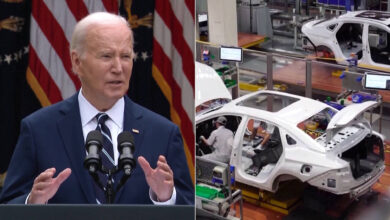What is an electric vehicle?

30 May 2024

As the electric vehicle (EV) market grows, Autovista24 special content editor Phil Curry explains which powertrains fall into the category, and what buyers need to know about the technology.
The EV market continues to grow across Europe, with registrations increasing year on year. The technology is advancing too, with bigger batteries and faster charging times.
In the first four months of 2024, EV registrations in the EU increased by 6.4% year on year, according to the European Automobile Manufacturers Association (ACEA). This combination of battery-electric vehicles (BEVs) and plug-in hybrids (PHEVs) held 19.2% of the new-car market. BEVs alone made up 12% of deliveries, while PHEVs claimed 7.2%.
These two powertrains can travel a significant distance on electric power alone. They must also be plugged into a charging point to replenish their onboard battery. These features set them apart from other electrified powertrains, such as full and mild hybrids.
PHEVs feature a smaller battery compared to BEVs, alongside an internal-combustion engine (ICE), and can travel a short distance on electric power alone. On average, this electric-only range is around 60 miles (96km). Should its battery run out of charge, a PHEV will rely on the ICE unit instead.
BEVs do not feature an ICE unit and are driven by electric power only. This means they are reliant on domestic or public charging points. However, with fewer moving components, they are more reliable than traditional ICE engines. With domestic charging, they can also be cheaper to run.
EV emission benefits
EU emissions regulations are set to become tougher in 2025 and 2035, including strict limits on CO2 emissions. Therefore, carmakers are turning to the EV market to reduce their fleet pollution levels.
PHEVs can help to reduce average CO2 emissions thanks to their electric-only range. However, the ICE drive still emits pollution at the tailpipe. Therefore, these models will be discontinued when the EU reduces the permitted CO2 tailpipe emissions to 0% in 2035.
BEVs help keep fleet emissions down as they do not produce CO2 while running. This is why they are also known as zero-emission vehicles (ZEVs). Alongside hydrogen fuel-cell vehicles (FCEVs), BEVs will play an important role in lowering air pollution levels across the EU.
The charging conundrum
With differing charging speeds and battery sizes available, BEVs require drivers to rethink their journey planning and driving.
A BEV’s range is dictated by the size of its battery. As an example, a 58kWh battery can provide around 260 miles of range on a single charge. Meanwhile, a 77kWh battery can deliver around 340 miles.
While regenerative braking can drive some power back to the battery, BEVs are reliant on charging points to stay fully charged. Therefore, these cars require comprehensive charging infrastructure, a goal which is currently being pursued across Europe. Drivers can also benefit from a domestic charger, to keep vehicles topped up at home.
These domestic charging points can usually deliver up to 3kW. However, charging speeds at public chargers vary. Fast chargers are often rated between 7kW and 22kW. These can charge a 40kWh battery in four to six hours or one to two hours respectively.
Meanwhile, rapid chargers can provide up to 50kW of power and ultra-rapid chargers can offer over 100kW. This means a battery can be boosted to 80% in roughly half an hour or 15 minutes, respectively.
However, the bigger the battery, the longer it will take to charge, much like having a larger fuel tank. So, while drivers can travel further, they will have to consider the required charging time.
The EV future
Carmakers are continuing to turn to EVs to meet environmental requirements, and this means that the number of models available will increase.
Alongside this, the European EV market is seeing competition from Chinese carmakers. This could mean new technologically advanced and affordable models capable of disrupting the market. With EV technology such as solid-state batteries developing, and regulations enforcing change, the EV market will only continue to grow in the coming years.



